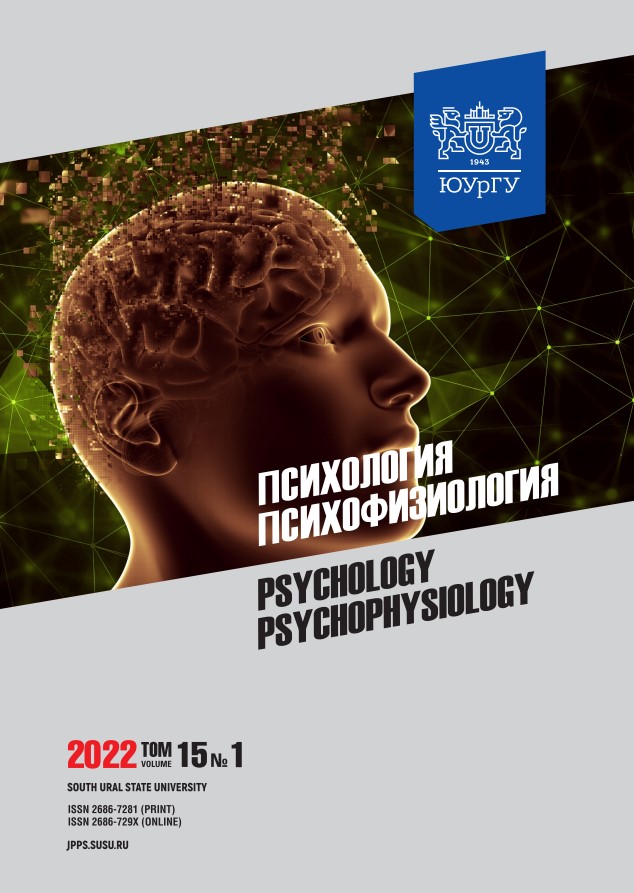Contactless assessment of psychoemotional status in female students
Abstract
Introduction. The instrumental methods of psychoemotional assessment are the most used in modern psychophysiological studies. Therefore, the prospects for the use of the Bioskop system in psychophysiological studies are of great interest. Aims. The paper aims to evaluate the prospects of using the developed system for objective assessment of psychoemotional status in female students during the academic year and exams. Materials and methods. The pilot study involved 10 female students (mean age 21.2 ± 1.1 years). Before the instrumental study, female students participated in the survey to identify their subjective attitude (positive or negative) to university disciplines. Psychoemotional assessment with the Bioskop system was conducted before and after the lectures considered as positive or negative in terms of students’ attitude. Signal recording was performed during 3 minutes at a distance of 1 cm from the palm of the left hand. The same procedure was repeated before and after exams. The analysis of the data obtained involved mean signal oscillation frequency, the spectral distribution of peak-to-peak intervals and their power. The reliability of the data obtained was confirmed with the Student’s t-test at significance level р < 0.05. Results. The data obtained showed that oscillation frequencies corresponded to the degree of psychoemotional stress in subjects, i.e. the higher the stress score, the lower the oscillation frequency. In relaxed subjects, as a rule, high frequency oscillations were recorded. In the case of a positive attitude to a university subject, as well as during the exam, a multiple increase in the power of pre-lecture/exam peak-to-peak interval spectrum was recorded compared to post-lecture/exam values. In the case of a negative attitude to a university subject, the opposite trend was observed. Conclusion. The data obtained confirm the prospects for using the Bioskop system for objective assessment of psychoemotional status.
Downloads
References
2. Sargsyan R.Sh, Karamyan G.G., Avagyan M.N. Noninvasive assessment of physiologic state of living systems. The Journal of Alternative and Complementary Medicine. 2010;16(11):1137–1144. DOI: https://doi.org/10.1089/acm.2010.0108.
3. Sargsyan R., Karamyan G. Nonlocal Correlations in Macroscopic Systems: Living Objects, Mental Influence and Physical Processes. NeuroQuantology. 2014;12(4):355–365. DOI: https://doi.org/ 10.14704/nq.2014.12.4.770
4. Danielyan I.A. Peculiarities of acoustic impact and physical exercise on the state of organism depending on sex and temperament of persons under test. Electronic Journal of Natural Sciences of NAS RA of Armenia. 2015;2(25):35–40.
5. Sarkisov G.T., Sargsyan R.Sh., Chubaryan F.A., Petrosyan R.A., Karapetyan L.M., Akopyan N.E. Non-contact assessment of the functional state of rats with experimental trichinellosis (Trichinella Spiralis). Meditsinskaya parazitologiya i parazitarnye bolezni = Medical parasitology and parasitic diseases. 2010;2:19–21. (in Russ.).
6. Jaghinyan A.V. Non-invasive monitoring of embryonic development of the chick embryo. Electronic Journal of Natural Sciences of NAS RA of Armenia. 2015;2(25):41–44.
7. Paronikyan R.G., Sargsyan R.Sh., Avagyan M.N. et al. Non-invasive assessment of the effective dose of lamotrigine and topiramate for the treatment of epileptiform states in rats. Epilepsiya i paroksizmalnye sostoyaniya = Epilepsy and paroxysmal states. 2019;11(2):142–152. (in Russ.). DOI: https://doi.org/10.17749/2077-8333.2019.11.2.142-152
8. Sargsyan R.Sh., Arakelyan M.A., Kostanyan A.L., Simonyan L.G. New Approaches to the Assessment of Psychophysiological State in Gifted Adolescents. Psychology. Psychophysiology. 2021;14(1):111–118. (in Russ.). DOI: https://doi.org/10.14529/jpps210111
References on translit
-Copyright (c) 2022 Psychology. Psychophysiology

This work is licensed under a Creative Commons Attribution-NonCommercial-NoDerivatives 4.0 International License.



